A Guide to Arrowhead Mills Flours
Not too long ago, all-purpose and wheat flours were about the only options on the market. Today, there are countless flour varieties that serve various dietary needs, and flavor and texture preferences. Here is the breakdown of a few flour options and when each may be a good option for you.
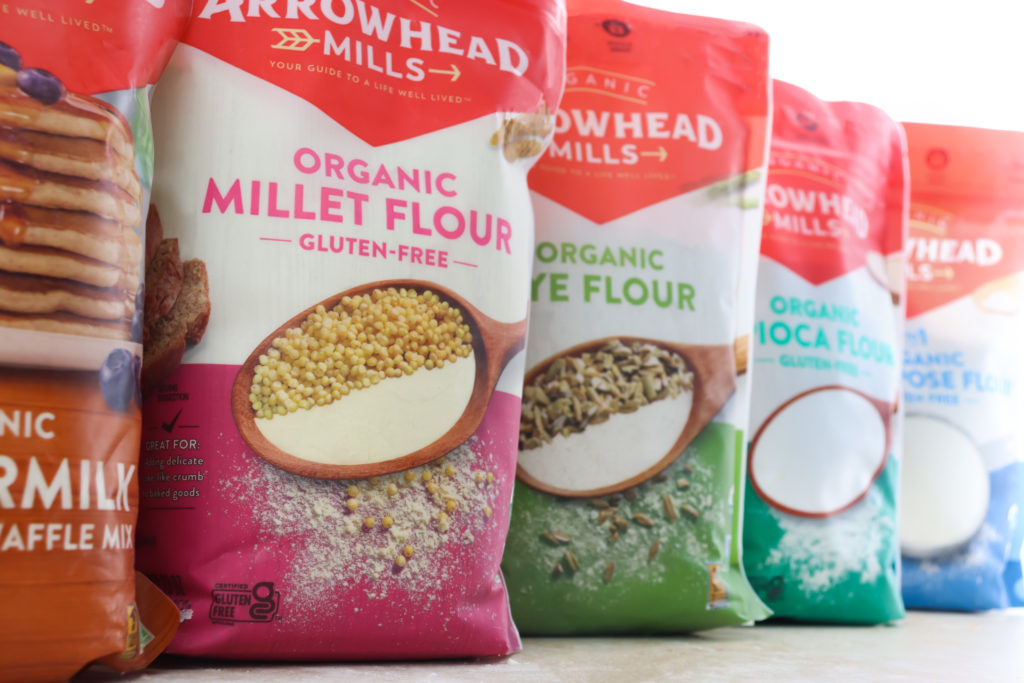
All Purpose Flour
This variety is likely the one you are the most familiar with, and perhaps have in your pantry now. All-purpose (AP) flour is produced by grinding wheat kernels stripped of their bran and germ (the most nutritious components of wheat). You can use this flour for nearly all baking needs, including cookies and cakes, and even savory dishes, like building sauces or breading protein before cooking. While it can work in sweet and savory items, and has few limitations in cooking and baking, it is not the most fiber rich flour option. However, it is a trusty option to keep on hand.
Whole Wheat Flour
Similar to all-purpose flour, whole wheat is a gluten-containing option that is not suitable for those with gluten sensitivities However, it is very versatile in baking and cooking. Whole wheat flour is a more nutrient-dense option than all-purpose flour. The entire wheat grain, including the endosperm, germ, and bran are present when milling this flour. Because of this, it is a higher protein and fiber flour, making it great for baking breads, muffins, pizza dough, and even pasta. You can swap one cup of all-purpose flour in a recipe for ¾ cup of whole wheat flour.
Millet Flour
Chances are you haven’t cooked with this variety yet, but there are some opportunities to incorporate it into your repertoire. Millet is a naturally gluten-free grain, making it perfect for those needing to avoid gluten. It has a lightly sweet flavor with a somewhat mealy texture, making it great for baking pancakes, muffins, and cookies. You can use 1/3 cup of millet flour in place of 1 cup of all-purpose flour in a recipe. While not ideal for some baking, like sponge cakes, millet flour is a good source of fiber and protein for other baking and cooking.
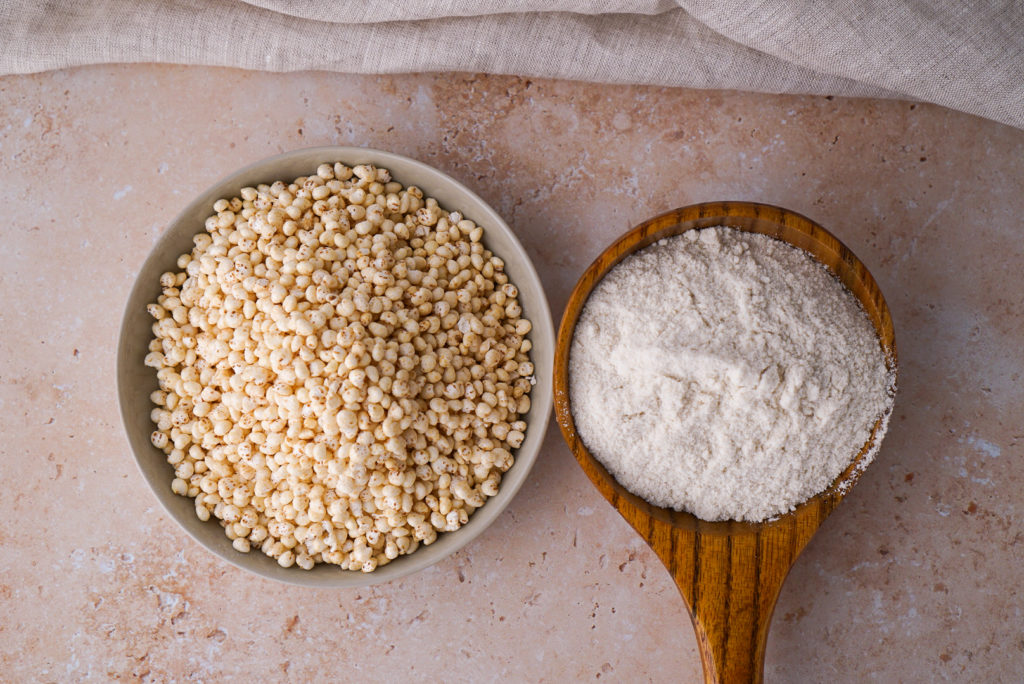
Oat Flour
Becoming more popular recently, oat flour is another gluten-free alternative. Oats are a natural source of soluble and insoluble fiber, making it a very nutritious product. Oats are very dense, making oat flour less ideal for light and airy baking, like pizza dough and bread. However, the natural density of oats is perfect for making cheesecake, crisps, and crumbles. To replace all-purpose flour in a recipe, you can use ¼ cup oat flour for every 1 cup all-purpose.
Brown Rice Flour
Another gluten free flour made from a whole grain is brown rice flour. It is produced with all components of the rice kernel, creating a more nutritious product. Brown rice flour is a great addition to a gluten free baking blend as it has a neutral flavor and aids in a light and crispy texture. Pie crusts and cookies are good uses for this flour. It can also be used as part of a gluten free baking mix. Because brown rice flour is not ideal on its own when it comes to baking, there is not a recommended conversion when swapping all-purpose flour for rice flour.
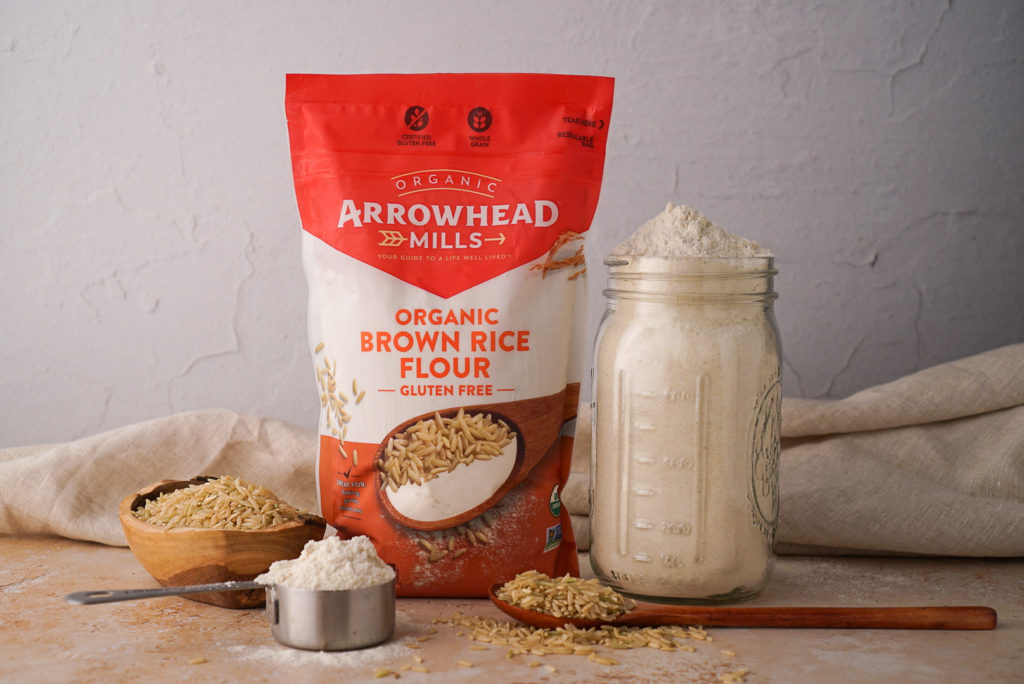
1 to 1 Gluten Free Flour
For those needing to following a gluten free diet but still wanting to enjoy home baked goods, this is the option for you! You can easily swap regular AP flour for equal amounts of this gluten-free option that will work seamlessly into you baking and cooking. Made with a combination of flours, including rice, tapioca, and millet, this option is designed to be your go-to gluten free flour at home.
Coconut Flour
This flour has a naturally mild and sweet flavor, making it unique amongst this list. Other unique properties of coconut flour include its relatively low carb count, high fiber content, and gluten free status. Coconut flour usually needs to be combined with more liquid or eggs in a recipe compared to other flours. However, it can still be used to make some of your favorite items, like baked goods and pizza crust. For reference, you can swap 1 cup of AP flour for 1/4 to 1/3 cup of coconut flour while increasing the eggs in your recipe.
Buckwheat Flour
Another option with great fiber content is buckwheat flour. It is also a good source of protein and is gluten free, despite the “wheat” in its name. Its earthy flavor if great for savory dishes, and soba noodles may be one of the more unique recipes often made with buckwheat flour. Recommendations suggest using buckwheat flour as part of a blend of flours rather than on its own. This addition into your flour mix will add a nutrient boost while a maintaining gluten-free product.

Spelt Flour
Yet another flour with notable fiber and protein content, spelt flour can easily be swapped for AP flour in a 1:1 ratio, and is a great option for baked goods, breads, and more. While dense in nutrients, spelt flour does contain gluten, making it less ideal for those with sensitivities. However, if gluten is not of concern to you, spelt flour is a nutritious option with a lightly sweet, nutty flavor that can be used in place of your traditional white or whole wheat AP flour.
Rye Flour
While rye flour does naturally contain gluten, it contains less of this protein than other flours, making it ideal in denser baked goods. For example, rye flour would be more ideal in baking cookies and breads and less ideal for lighter baked goods, like cakes. Rye flour contains a good amount of fiber, making it a nutritious option. You can swap 1 cup of AP flour for 1 cup + 2 tablespoons on rye flour the next time you bake bread, scones, pasta, or other items intended to be denser in texture.
Tapioca Flour
Another option to add to your gluten-free baking mix, tapioca flour is naturally gluten free and highly absorbent. This unique characteristic makes tapioca flour great for thickening sauces and pie fillings. Tapioca flour does not contain any fiber or protein, making it a less nutritious option. However, it lends unique texture and is a great option to incorporate into flour mixes. In addition to providing a somewhat gummy texture, tapioca flour can also add a nice crispness when used as part of a flour mixture to coat fried foods.
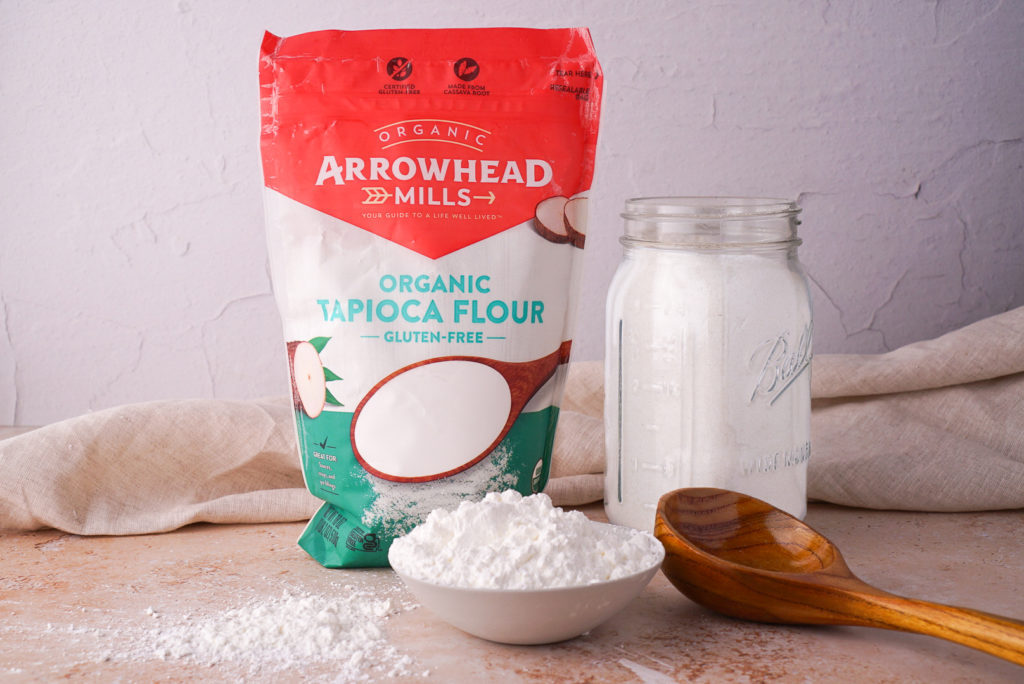
Yellow Cornmeal
While yellow cornmeal is not typically viewed as a flour, it’s the whole corn kernel ground into a fine meal. This naturally gluten free grain is loaded with fiber, minerals and antioxidants. You can use it in cornbread, as a batter for fried foods, or to make tortillas. It’s excellent when made into creamy polenta, too.
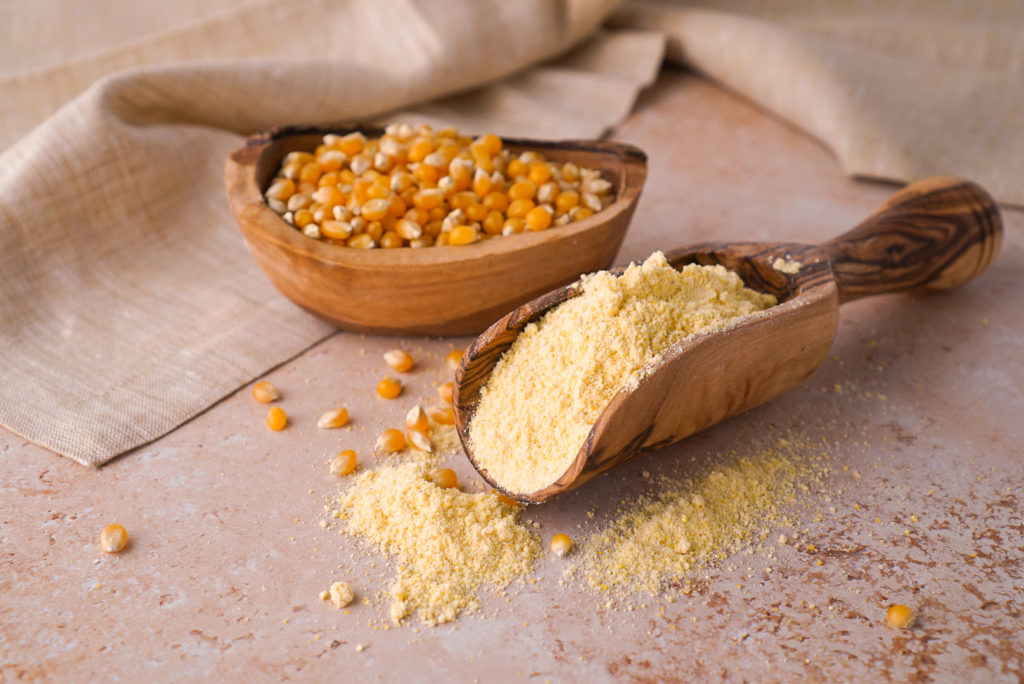
 VIEW ALL PRODUCTS
VIEW ALL PRODUCTS 
